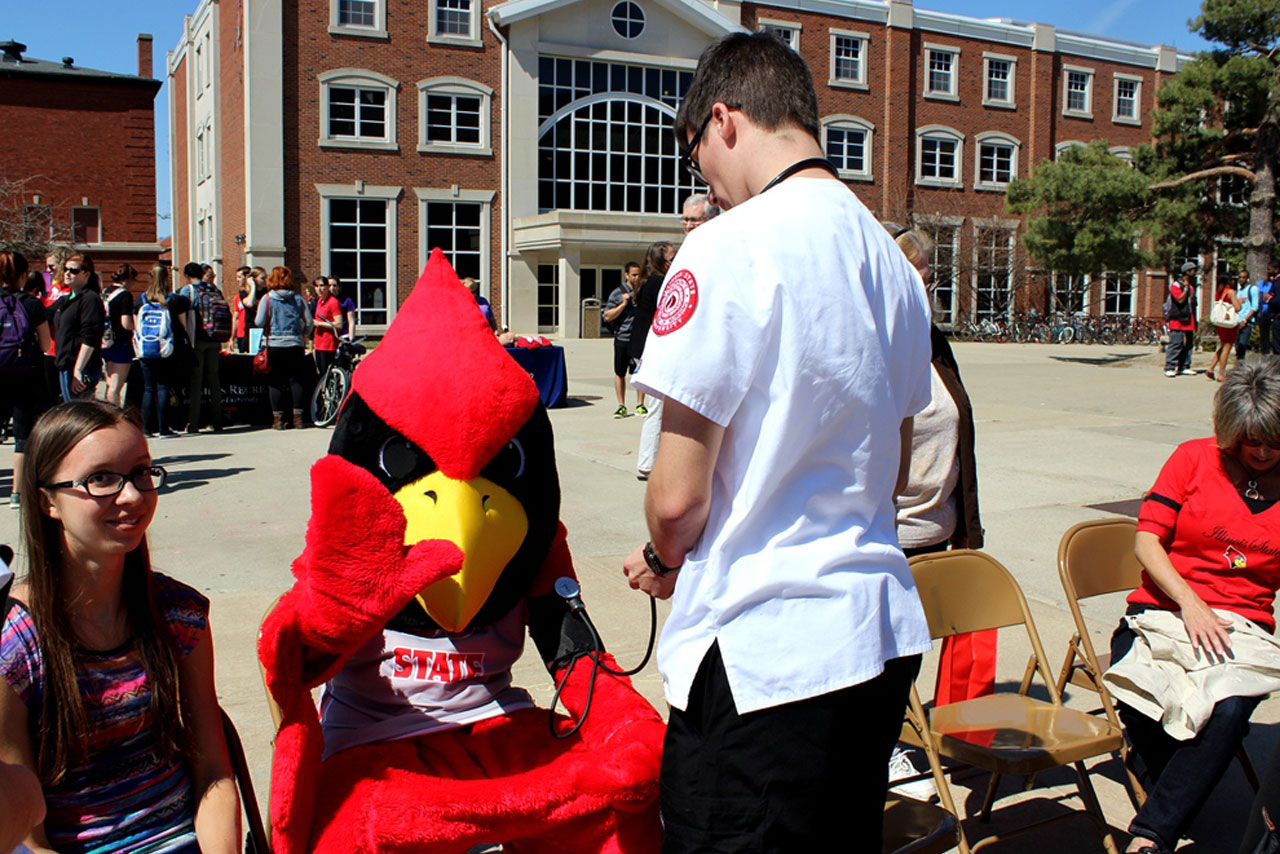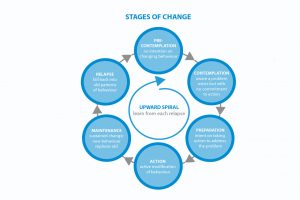So you’ve decided that you want to make a change and work on an area of your health. How and where do you being?
It can be extremely overwhelming to take that first step, but there is a science behind positively changing your behavior. People go through five stages for behavior change: pre-contemplation, contemplation, preparation, action, and maintenance. We tend to move in an upward spiral; however, individuals can move from one stage to another at any time and remain in a stage for any length of time.
The stages of change are also great to help you identify why someone you know is or is not making positive changes in their life. Understanding each phase and being able to recognize where yourself and others are can help you provide better support.
The Five Stages of Change
- Pre-contemplation: In this stage, you are not aware that there is something you wish or need to change, you are in denial, or you simply do not care.
- Contemplation: You have started thinking about making changes, but are not quite ready yet. This stage can be full of justifications and excuses. This can be the most difficult stage and people can stay here forever.
- Preparation: Congratulations! You’ve moved past the ambivalence in contemplate stage and have added planning to your thinking. It is vital that you build confidence that you can be successful.
- Action: It’s go time! This is the most rewarding stage as all that thinking and planning finally goes to good use. This can be the most rewarding stage as you start seeing positive outcomes directly related to your changes.
- Maintenance: This is where your changes become a true lifestyle change. New behaviors become habits and you make them without a second thought. However, maintenance is an active process and requires you to still be focused on your goals.
- Possible sixth stage: Relapse. Sometimes we slip up—and that’s ok! The good news is that you do not have to start over. Acknowledge and accept what happened, while forgiving yourself for being human. Then, get right back on the proverbial horse.
Make SMART Goals
Speaking of goals, here are some tips to make sure your wellness-related goals are SMART: specific, measurable, action-oriented, realistic, and time-bound. Keeping these objectives in mind will help you set your objectives and create an action plan.
- Specific: General goals leave a lot of wiggle room. Clearly outline what you want to accomplish with your goal. For instance, an example of a general goal is “I want to exercise more.” A specific goal is “I will walk on my lunch break three times per week for 30 minutes.”
- Measurable: Make sure you have a way to quantify your goal. Using the example above, you will be able to track how many times you have walked and how long. This is key to being able to see the progress you are making.
- Action-oriented: Be clear on what actions you need to take to reach this goal. Example of a general goal: “I want to be less stressed.” An action-oriented goal would be “I will attend Health Promotion and Wellness’s Mindfulness Class every Wednesday for four weeks to learn new skills to manage stress.”
- Realistic: It’s okay to think big, but make sure you set yourself up for success by setting sensible goals. An example of an unrealistic goal is “I am going to stop eating all sweets and sugars.” A more realistic goal is “I am going to limit dessert to twice a week.”
- Timely: Give yourself a deadline or at least a date-bound target to meet. Example of a general goal: “I want to lower my blood pressure.” A timely goal would be: “I will walk three times a week and only eat out twice a week to lower my blood pressure by my 45th birthday.” You can always extend your timeframe, but having deadlines to work towards will keep you honest.
Additional Tips
- Tackle the mountain one step at a time. Breaking your larger goal into smaller, more manageable steps can be easier for some people to manage. Once you’ve mastered one component of your larger goal, move on to the next piece.
- Be patient. Research has shown it takes 21-28 days to make a habit. Also, it often takes time to see positive results from lifestyle changes. Extreme measures often do not turn into long-term, healthy, and sustainable results. Keep reminding yourself of your goals and why you are important.
- Enlist help. There are many campus and community resources available to help you work towards your goals. Unsure of where to start? Contact Health Promotion and Wellness and we can help you figure it out.
- Share with others. Tell people in your life what you are working to achieve so that they can support you.
Support Available from Health Promotion and Wellness
Health Promotion and Wellness is here to help! From free nutrition consults and ergonomic assessments to the SEVEN wellness incentive program, we have a variety of programs and services to help support your goals. Health Promotion and Wellness provides wellness information, services, events, and programming to students, faculty, staff, and the Illinois State community. People living, learning, and working in a healthy environment are more likely to reach their highest potential.
For more information, visit Wellness.IllinoisState.edu, call (309) 438-WELL (9355), email Wellness@IllinoisState.edu, or stop by 187 McCormick Hall.


